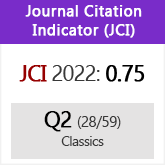The semantics of the preposition ὑπέρ in Homeric Greek
DOI:
https://doi.org/10.3989/emerita.2016.01.1418Keywords:
meaning of prepositions, Homeric Greek, cognitive grammar, structured polysemy, case variation, semantic networkAbstract
Prepositions are highly polysemic words. In Homeric Greek, they either retain a number of meanings that are lost in post-Homeric Greek, or have not yet developed other meanings that later become conventionalized. In this paper, I analyze the semantics of the preposition ὑπέρ in Homeric Greek using the terminology of cognitive grammar. In addition, I use the model of structured polysemy in order to detect the original meaning of ὑπέρ, and to distinguish, among all its meanings, those triggered by the context from those independently stored in the mind of speakers. While making such a distinction, I also take into account both the semantic development of ὑπέρ in post-Homeric Greek, and the interaction between preposition and morphological case. I then arrange the distinct meanings in a semantic network, and link them directly or indirectly to the original spatial meaning. At the end, I show how further spatial or abstract meanings develop from the original meaning.
Downloads
References
Allen, T. W. 1931: Homeri Ilias. Tomus II. Libros I-XII continens, Oxford.
Allen, T. W. 1931: Homeri Ilias. Tomus III. Libros XIII-XXIV continens, Oxford.
Brugman, C. 1981: The story of over. MA thesis, Dept. of Linguistics, UC Berkeley. Pubblicata (1988) come The Story of Over: Polysemy, Semantics, and the Structure of the Lexicon, New York.
Buck, C. D. 1910: Introduction to the study of the Greek dialects: grammar, selected inscriptions, glossary, Boston. PMCid:PMC2330625
Chantraine, P. 1953: Grammaire Homérique. Vol. II: Syntaxe, Parigi.
Chantraine, P. 1968: Dictionnaire étymologique de la langue grecque, Parigi.
Ebeling, H. 1885: Lexicon Homericum. Vol. II: ?-Ω, Lipsia.
Hewson, J. e Bubenik, V. 2006: From Case to Adposition: The development of configurational syntax in Indo-European Languages, Amsterdam-Philadelphia.
Horrocks, G. C. 1981: Space and Time in Homer. Prepositional and Adverbial Particles in the Greek Epics, New York.
Kreitzer, A. 1997: «Multiple levels of schematization: a study in the conceptualiza tion of space», Cognitive Linguistics 8(4), pp. 291-325. http://dx.doi.org/10.1515/cogl.1997.8.4.291
Kury?owicz, J. 1964: The Inflectional Categories of Indo-European , Heidelberg.
Lakoff, G. 1987: Women, Fire and Dangerous Things: What Categories Reveal about the Mind , Chicago.
Langacker, R. W. 1987: Foundations of Cognitive Grammar. Vol. I, Stanford (CA).
Langacker, R. W. 2008: Cognitive Grammar: A Basic Introduction, New York. http://dx.doi.org/10.1093/acprof:oso/9780195331967.001.0001
Lord, A. B. 1960: The singer of tales, Cambridge (MA).
Luraghi, S. 2003: On the Meaning of Prepositions and Cases. A Study of the Expression of Semantic Roles in Ancient Greek , Amsterdam-Philadelphia.
Luraghi, S. 2010: «Where do beneficiaries come from and how do they come about? Sources for beneficiary expressions in Classical Greek and typology of beneficiary», in Tissari, H. et al. (eds.), Historical Cognitive Linguistics, Berlino-New York, pp. 93-131.
Luraghi, S. 2012: «The spatial meaning of diá with the accusative in Homeric Greek», Mnemosyne 65/3. http://dx.doi.org/10.1163/156852511X547965
Parry, A. (ed.) 1971: The Making of Homeric Verse. The Collected Papers of Milman Parry, Oxford.
Sandra, D. 1998: «What linguists can and can't tell us about the mind: a reply to Croft», Cognitive linguistics 9 (4), pp. 361-378. http://dx.doi.org/10.1515/cogl.1998.9.4.361
Schwyzer, E. 1950: Griechische Grammatik . Vol. II: Syntax, Monaco.
Talmy, L. 1988: «The relation of grammar to cognition», in Rudzka-Ostyn, B. (ed.), Topics in Cognitive Linguistics, Amsterdam-Philadelphia, pp. 165-205. http://dx.doi.org/10.1075/cilt.50.08tal
Taylor, J. R. 1993: «Prepositions: patterns of polysemisation and strategies of disambiguation», in Zelinsky-Wibbelt, C. (ed.), The semantics of prepositions, Berlino- New York. http://dx.doi.org/10.1515/9783110872576.151
Tyler, A. e Evans, V. 2003: The Semantics of English prepositions. Spatial scenes, Embodied Meaning and Cognition, New York. http://dx.doi.org/10.1017/CBO9780511486517
Watkins, C. 1964: «Preliminaries to the reconstruction of Indo-European sentence structure», in Lunt, H. G. (ed.), Proceedings of the Ninth International Congress of Linguists, L'Aia, pp. 1035-1045.
Downloads
Published
How to Cite
Issue
Section
License
Copyright (c) 2016 Consejo Superior de Investigaciones Científicas (CSIC)

This work is licensed under a Creative Commons Attribution 4.0 International License.
© CSIC. Manuscripts published in both the printed and online versions of this Journal are the property of Consejo Superior de Investigaciones Científicas, and quoting this source is a requirement for any partial or full reproduction.All contents of this electronic edition, except where otherwise noted, are distributed under a “Creative Commons Attribution 4.0 International” (CC BY 4.0) License. You may read here the basic information and the legal text of the license. The indication of the CC BY 4.0 License must be expressly stated in this way when necessary.
Self-archiving in repositories, personal webpages or similar, of any version other than the published by the Editor, is not allowed.














